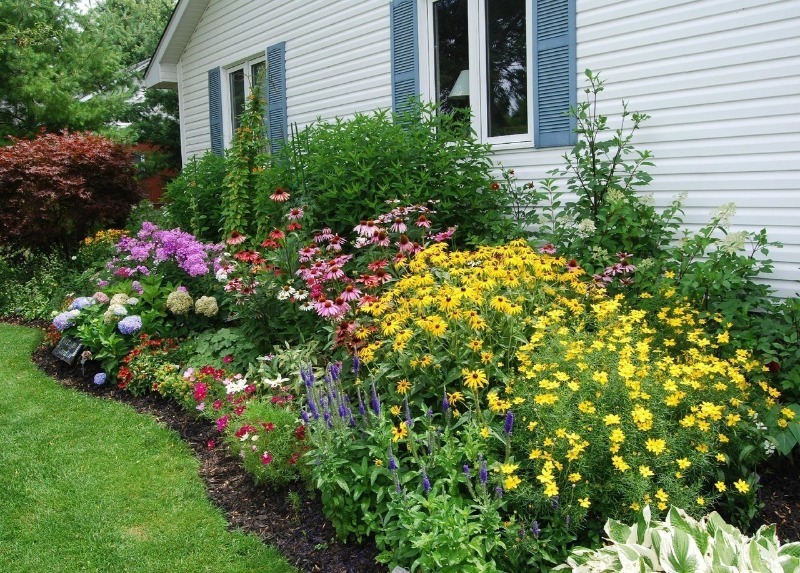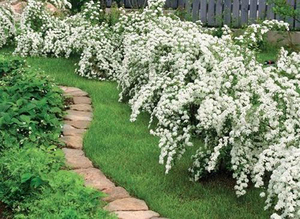The cherished dream of every land owner is to enjoy the beauty of his garden, listen to birdsong, feast on fresh fruit straight from the branch. And at the same time, do not feel like a squeezed lemon after long loosening, top dressing, weeding and other maintenance work. But it is quite possible to create a real "lazy" garden, although it will take a lot of work to lay it down. But all these material, time and physical costs in the future will quickly justify themselves.

Prepare the soil in areas of future planting
To begin with, we study the type and acidity of the soil, as well as the level of occurrence of groundwater. The creation of favorable conditions for the successful development of plantations can be achieved by sowing green manures (legumes and cereals, mustard, phacelia or calendula), followed by deep tillage and fertilization. By creating the right amount of biomass, you can improve the root system and physical properties of the soil.
Before laying a garden, you must properly prepare the soil. The plowing depth depends on the thickness of the humus horizon and on the crop for which it is produced.
The best soil preparation in the garden is considered to be continuous plowing with a plantation plow to a depth of 50-60 cm with the simultaneous introduction of organic fertilizers (manure or compost). For autumn planting, plowing is carried out 1-1.5 months before planting, and for spring planting - in autumn.
Install automatic watering system
To make life easier for gardeners, various automatic irrigation systems have been developed. In order to properly organize the moistening of the site, by this stage you should have a plan for the location of the plantings of the selected crops. Several devices can be installed in one space for zones that need different humidification modes.
Choose the right plants
To create a luxurious garden that does not require constant maintenance, plants must be selected for the conditions of a particular place. That is, in shaded places, plant shade-loving crops, and in sunny glades, respectively, light-loving ones. In wet, swampy places, settle moisture-loving species, and those that in nature choose dry rocky parts, place them on sandy or rocky zones.
Use stones and dumps
With the help of decorative fillings, you can create a kind of style for your garden, emphasize the beauty of certain plants, and place the necessary accents. It is also a great way to mulch the soil. At the same time, the growth of weeds slows down, temperature fluctuations on the soil surface during the day decrease, moisture evaporates more slowly, as a result, an unaesthetic and harmful crust for plants does not form on the surface.
If the prepared soil for rockeries is covered with black agrotex, then the rocky garden will not require weeding. Give preference to species that do not require specific care. Plant perennials in lawns, making cross-shaped cuts in the shelter. Populate the flower beds with flowers wintering in the ground. Asters, daylilies, crocuses, as well as snowdrops, tulips and daffodils, irises and primroses, peonies, etc. are good for "lazy people".
Choose sustainable and decorative trees and shrubs
With the help of ornamental shrubs, many problems are solved. From dividing the garden space into zones and filling the site with flowering plants to fencing it with a green living fence.Conifers, barberries and hawthorns, dozens of types of lilacs will cope well with this. Garden jasmine, frost-resistant, resistant to diseases and pests. The frost-resistant undersized Japanese quince takes root on any soil.
From decorative hardwoods for group compositions, it is better to dwell on the types that combine frost resistance and attractiveness. These include downy birch, riverine and silver maple, mountain ash. Oak, linden and Manchu walnut can perform solo.
Avoid single planting of flowers and bushes in the lawn
Leave no empty space for weeds. Make compositions from plants with similar requirements. Plant light-loving shrubs next to shady vegetation. So the plants will help you and one another. Moreover, lonely growing flowers not only look lonely, but also complicate the process of mowing the lawn. Create compositions blooming all summer from different plants that replace each other in terms of flowering time.
We group and mulch plants in plantings
You can group plantings from one or several breeds. For a smooth transition from trees to lawns to trees, shade-tolerant shrubs are planted, thereby creating a planting density, preventing weeds from multiplying and retaining moisture. In the foreground, small ornamental shrubs with a spreading crown are planted. As mulch under shrubs, you can use cones, bark, sawdust, diluting with large stones and gravel.


